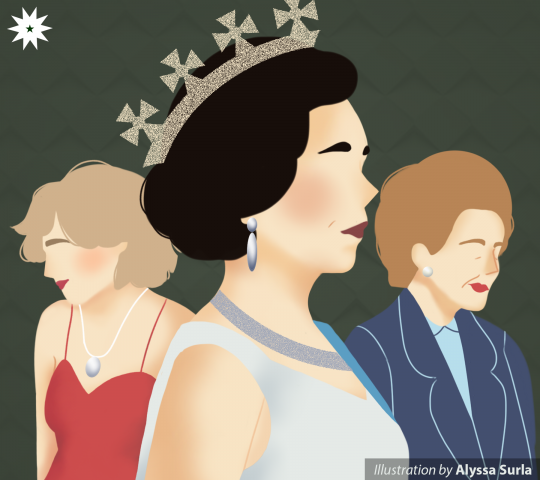
The Crown has been one of Netflix’s prized prestige shows, having consistently delivered awards season buzz and pop culture mileage for three years now. Treading the line between drama and history, the show has capitalized on the general public’s morbid fascination with the British royal family. The constant push-and-pull between royal fantasy and far-from-perfect reality executed with stunning visuals and powerful performances has kept fans satisfied despite the major cast change midway.
With frenzied anticipation for the fourth season also comes unprecedented pressure: will the show be able to pull off handling not just Margaret Thatcher but also Princess Diana? At the outset, tackling larger-than-life figures may seem like a precarious task; after all, there are countless forgettable biopics out there that have tried and failed. But show creator Peter Morgan has risen to the occasion, deftly weaving nuance into widely-publicized tales in yet another season that will leave viewers begging for more.
Dying spark
The introduction of two new characters, Thatcher and Diana, brought new dynamics to the show. Through the royal family’s treatment of the outsiders, they served as both mirror and foil to Queen Elizabeth. As the “People’s Princess”, Diana is subjected to the familiar media scrutiny heaped upon the royals, but her charm and individuality also challenge the rigidity of the institution. Furthermore, Thatcher’s working class background questioned the royals’ excessive—and often elitist—habits.
These two internal threats also highlight the sociopolitical context of the period: from issues like unemployment, the Falklands War, Britain’s involvement with the apartheid in South Africa, and the Irish Republican Army, the growing public discontent threatens both the monarchy and government like never before.
Feast for the eyes
For a series based on historical events, The Crown’s attention to detail has always been incomparable. The set design depicting splendor and wealth provides a gorgeous backdrop for the resentment and woes we witness this season. Status symbols are casually draped around the characters’ bodies, with costumes that are as memorable as their identities. Particularly standing out this season are the rousing musical score by Martin Phipps and Diana’s iconic dresses brought to life by costume designer Amy Roberts.
The cast also did not miss, featuring stellar performances by both old and new faces. The members of the Royal family, led by Olivia Coleman as Queen Elizabeth II, Tobias Menzies as Prince Philip, Helena Bonham-Carter as Princess Margaret, and Josh O’Connor as Prince Charles dazzle with their portrayal of the royals’ blindness over entitlement, selfishness, and duty. Newcomers Emma Corrin as Princess Diana and Gillian Anderson as Prime Minister Thatcher are wonderful additions to the roster, with Corrin not only nailing Diana’s looks and mannerisms but also doing a remarkable job portraying her personal struggles in the spotlight. Anderson is also praiseworthy for her turn as Britain’s “Iron Lady”, the show executing a masterful balancing act of portraying the consequences of her flawed policies and fleshing her out with nuance. In fact, one of the season’s highlights is an intimate moment between her and the Queen, where the latter expresses rare sympathy toward Thatcher.
Warts and all
The previous seasons drove home the point of how appearances are crucial to the Crown’s stability and how extreme measures are taken to ensure that the monarchy remains unblemished—on the outside, at least. This season peeled away the cracking facade further, exploring the fragility of the monarchy as an institution, the illusion of Great Britain as a still-glorious empire, and the image of a marriage through the storylines of Elizabeth, Thatcher, and Diana.
While perhaps its predecessors have been kinder, the chickens have come home to roost for the Windsors this season; finally unveiling the inevitable consequences of decades-long behavior. In not shying away from showing their flaws, the show turns up the dial on what makes it so compelling—the complex characterization. Elizabeth awakens to the horrifying realization of her shortcomings as a mother, and yet is too set in her ways to change. Margaret’s wisdom in her twilight years ultimately could not save her from falling into the same self-destructive cycle. Diana, meanwhile, is neither sinner or saint, but something in between.
Layered and razor-sharp, the characterization makes it clear that the story will not make gods out of mortals. Although the complexity of Elizabeth’s and Thatcher’s depictions tends to lean more toward sympathetic, the show ultimately illustrates the two figures as similarly remote and out-of-touch with the masses. This final indictment reflects a more modern assessment of the monarchy’s place in the world amid the growing clamor to challenge deeply rooted and oppressive systems of power. It also echoes the monarchy’s greatest fear—to be deemed obsolete. As The Crown poses this question through its characters and its themes, it sets the pieces in place for an even more explosive final two seasons.
Rating: 4.0/4.0
